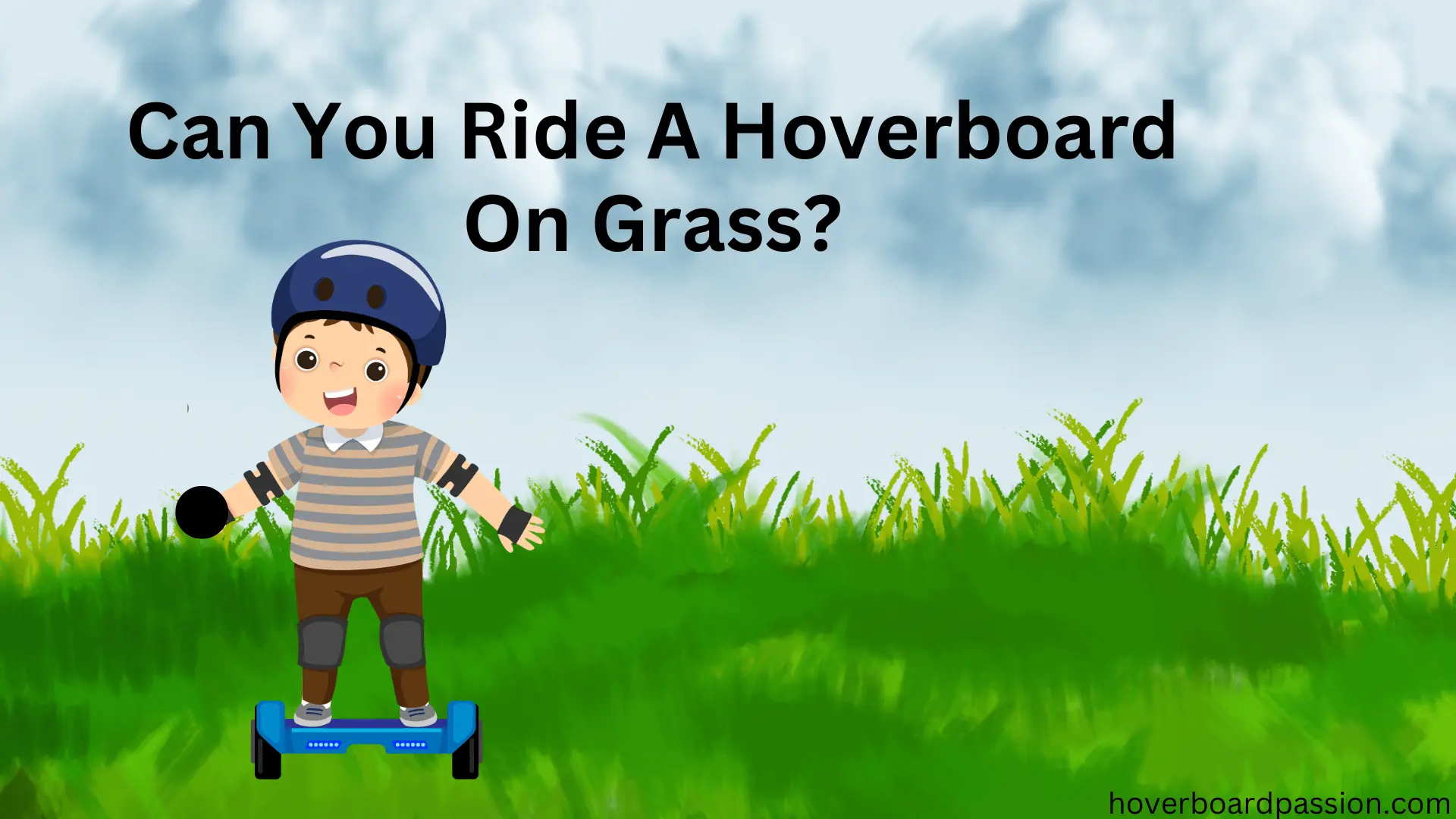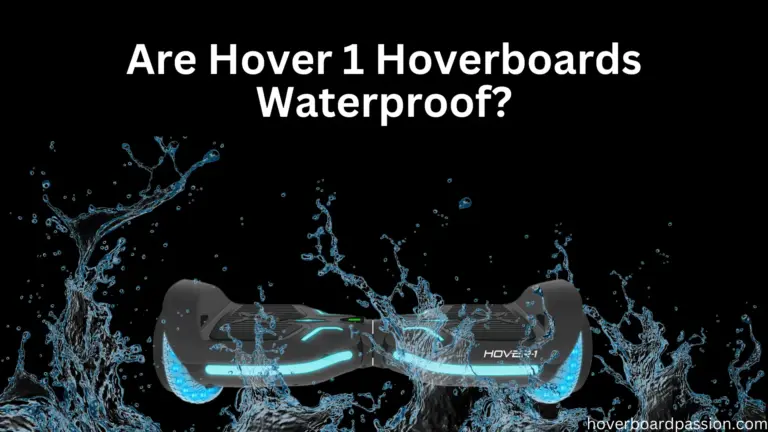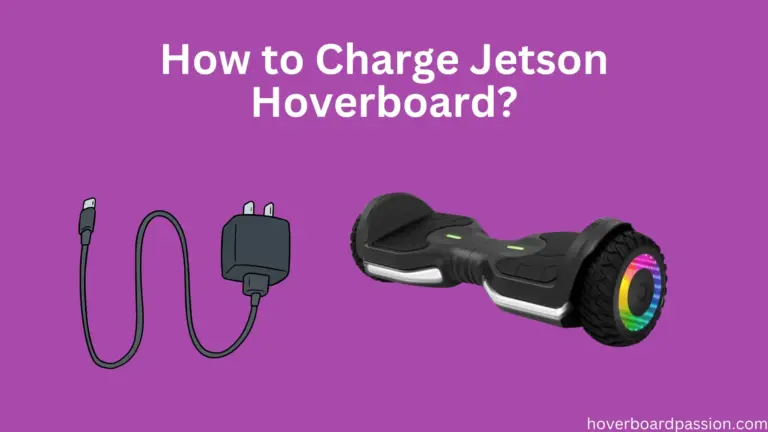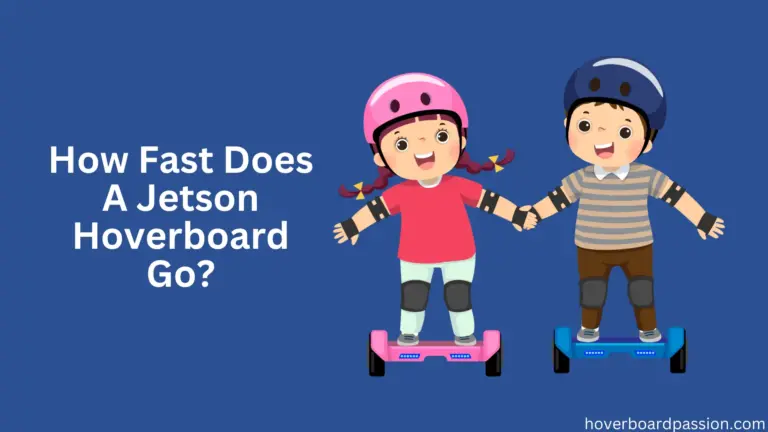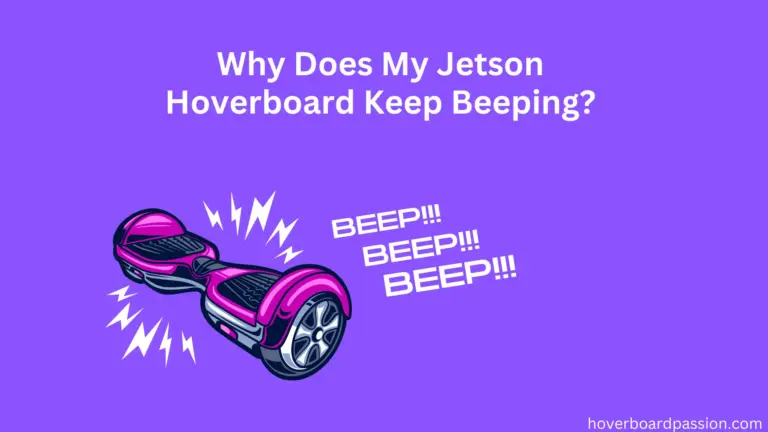Can You Ride A Hoverboard On Grass?
While hoverboards were created for cruising on flat surfaces like sidewalks, advancements have made them more versatile. Nowadays, there are hoverboards specially built to handle rough terrain like grass and dirt trails. These off-road hoverboards come with sturdy tires and enhanced suspension systems, allowing riders to glide smoothly over uneven surfaces.
So, can you ride a hoverboard on grass? Let’s dive in.
Dynamics of Hoverboards on Grass
Hoverboards, those sleek self-balancing scooters, have captured the imagination of many with their futuristic appeal. While they were initially designed for smooth surfaces, like pavements and indoor floors, their versatility has expanded in recent years. One intriguing aspect is how they perform on grass, a surface not traditionally associated with hoverboard riding.
The dynamics of riding a hoverboard on grass differ from gliding on smooth surfaces. Grass, with its uneven terrain and varying densities, presents a unique challenge. However, advancements in hoverboard technology have addressed this, introducing models specifically engineered for off-road adventures.
These off-road hoverboards boast features like robust tires with deep treads and enhanced suspension systems. These elements work in tandem to provide stability and traction, allowing riders to navigate grassy fields and rugged terrain with ease.
Understanding the dynamics involves considering factors like weight distribution, tire grip, and rider skill. Distributing your weight evenly helps maintain balance, while the traction provided by the tires ensures a smoother ride. Additionally, mastering control and maneuvering techniques is essential for tackling grassy surfaces safely.
Furthermore, environmental factors such as grass length and moisture levels can influence performance. Shorter grass with moderate moisture levels generally provides better traction compared to tall or wet grass.
In conclusion, while hoverboards were initially intended for flat surfaces, their adaptability has made them suitable for off-roading adventures on grass and other challenging terrains. By understanding the dynamics and choosing the right equipment, riders can experience the thrill of gliding through nature aboard their hoverboards.
Important Factors to Consider Before Choosing a Hoverboard
Before you rush to pick out your dream hoverboard (and yes, safety first—no one wants a hoverboard blow-up!), there are several key factors you should keep in mind. Here’s a breakdown of what to consider:
- Tire Material: For off-road adventures, opt for hoverboards with air-filled tires. These provide excellent traction and stability on uneven surfaces. Just remember to keep an eye on tire pressure to maintain optimal performance.
- Tire Size: Bigger tires, typically 8.5 inches and above, are ideal for off-roading. Smaller tires are fine for smooth surfaces but won’t handle muddy or rough paths as well.
- Tread Pattern: The tread pattern plays a crucial role in grip and traction. Look for a combination of directional and asymmetrical treads for superior performance. These patterns help disperse water and provide traction in various conditions.
- Motor Power: The motor is the heart of your hoverboard. Opt for a motor with 200 watts or more for top-notch performance, especially for outdoor trails and rugged terrain.
- Speed Capability: Consider the hoverboard’s speed capabilities, which depend on motor quality and battery specifications. Higher-end models can reach speeds of up to 16 kph, ensuring a thrilling ride over various surfaces.
- Quality: A hoverboard’s quality determines its performance and durability. Look for models with sturdy materials like metal or high-quality plastic for long-lasting enjoyment.
- Weight Capacity: Check the weight capacity of the hoverboard to ensure it can safely accommodate your weight. For off-roading, choose a model with a higher weight capacity to avoid exceeding limits that could lead to damage or accidents.
- Your Skill Level: Riding a hoverboard, especially off-road, requires skill and experience. Beginners should stick to smoother surfaces until they’re confident in their abilities to handle rough terrain safely.
- Battery Life: Don’t overlook battery life. Off-road hoverboards typically have a charging time of 1 to 2 hours. Ensure the battery can sustain your adventures over grass, gravel, or other challenging surfaces without sudden drops in power.
By considering these factors, you can select a hoverboard that meets your needs and provides a thrilling riding experience, whether you’re cruising on smooth pavement or exploring rugged terrain. You should also know how to prevent the hoverboard from exploding.
Tips for Mastering Grass Riding on Your Hoverboard
Riding a hoverboard on grass can be a fun and adventurous experience, but it requires a bit of skill and know-how to navigate smoothly. Here are some tips to help you master grass riding like a pro:
- Choose the Right Hoverboard: Opt for a hoverboard specifically designed for off-roading. These models typically feature sturdy tires with deep treads and enhanced suspension systems, providing better traction and stability on grassy terrain.
- Start Slow: If you’re new to riding on grass, start slow and gradually increase your speed as you gain confidence. Grass can be uneven and challenging to navigate, so take your time to get accustomed to the terrain.
- Maintain Proper Balance: Balance is key to riding a hoverboard on any surface, but it’s especially crucial on grass. Keep your feet parallel and centered over the hoverboard, and use your body’s natural movements to maintain stability.
- Bend Your Knees: Flexing your knees slightly can help absorb bumps and unevenness in the grass, allowing for smoother riding. Keep your knees bent and your weight distributed evenly to improve control and maneuverability.
- Use Gentle Movements: Avoid making sudden or jerky movements while riding on grass, as this can throw off your balance and lead to falls. Instead, use gentle and gradual movements to steer and accelerate.
- Look Ahead: Keep your eyes focused on the path ahead to anticipate any obstacles or changes in terrain. Looking ahead allows you to adjust your speed and direction accordingly, helping you avoid potential hazards.
- Practice Turning: Turning on grass can be trickier than on smooth surfaces, so practice making gradual turns to avoid losing control. Start with wide turns and gradually decrease the radius as you become more comfortable.
- Be Mindful of Weather Conditions: Wet or dewy grass can be slippery, so exercise caution when riding in these conditions. Additionally, avoid riding on grass that is too tall or thick, as it can impede your progress and increase the risk of accidents.
- Stay Alert: Always be aware of your surroundings and any potential hazards while riding on grass. Watch out for rocks, branches, or uneven terrain that could cause you to lose control or fall.
By following these tips and practicing regularly, you can become a confident and skilled rider on grassy terrain, enjoying all the thrills and adventures that hoverboarding has to offer.
Safety Precautions For Hoverboarding On Grass
Hoverboarding on grass can be an exciting adventure, but it’s essential to prioritize safety to avoid accidents and injuries. Here are some important precautions to keep in mind before you embark on your grassy ride:
- Wear Protective Gear: Always remember to wear the proper safety equipment, such as a helmet, knee pads, elbow pads, and wrist guards. These protective accessories can help prevent serious injuries in case of falls or collisions.
- Choose the Right Terrain: Not all grassy areas are suitable for hoverboarding. Avoid areas with tall grass, uneven terrain, or hidden obstacles that could pose hazards. Opt for flat, well-maintained grassy areas with minimal obstacles for a safer riding experience.
- Inspect Your Hoverboard: Before riding, thoroughly inspect your hoverboard for any signs of damage or malfunction. Check the tires, battery, motors, and other components to ensure everything is in good working condition.
- Adjust Your Speed: Grassy terrain can be more challenging to navigate than smooth surfaces, so adjust your speed accordingly. Start at a slow pace and gradually increase your speed as you become more comfortable with the terrain.
- Practice Balancing: Grass riding requires good balance and stability. Practice balancing on your hoverboard on flat, stable ground before attempting to ride on grass. Focus on keeping your body centered and your weight evenly distributed over the hoverboard.
- Be Mindful of Obstacles: Watch out for obstacles such as rocks, tree roots, branches, and uneven terrain while riding on grass. Always scan the area ahead and be prepared to navigate around obstacles to avoid collisions or falls.
- Avoid Riding in Wet Conditions: Wet grass can be slippery and hazardous for hoverboarding. Avoid riding on grassy terrain after rain or dew, as it can increase the risk of slips and falls.
- Stay Alert and Aware: Pay attention to your surroundings and stay alert while riding on grass. Be mindful of other people, animals, or vehicles in the area, and be prepared to react quickly to unexpected situations.
- Know Your Limits: Don’t attempt maneuvers or tricks beyond your skill level while riding on grass. Stick to riding techniques and maneuvers that you’re comfortable with to reduce the risk of accidents.
- Ride Responsibly: Lastly, always ride responsibly and follow local laws and regulations regarding hoverboarding. Respect private property rights, avoid riding in restricted areas, and be considerate of others sharing the space.
By following these safety precautions, you can enjoy a fun and exhilarating hoverboarding experience on the grass while minimizing the risk of accidents or injuries.
Conclusion
In conclusion, riding a hoverboard on grass can be an enjoyable adventure with the right precautions and equipment. By wearing protective gear, choosing suitable terrain, and practicing safe riding techniques, you can navigate grassy areas confidently. Remember to stay vigilant, adjust your speed accordingly, and respect your limits while embracing the thrill of hoverboarding on grass.
